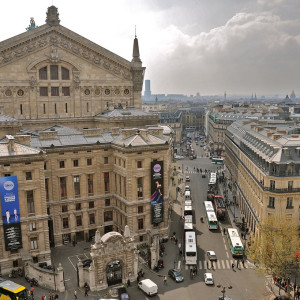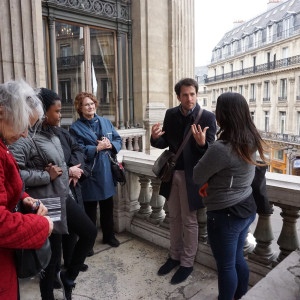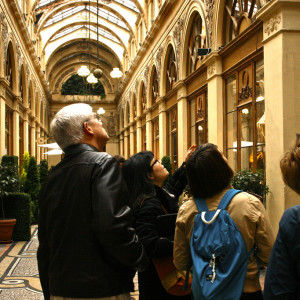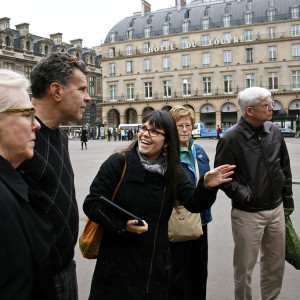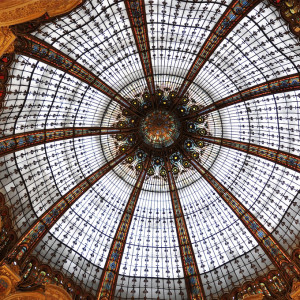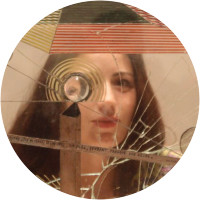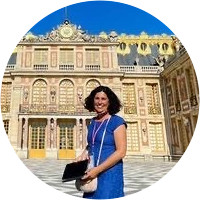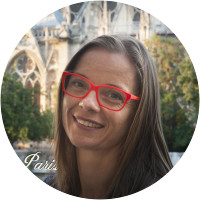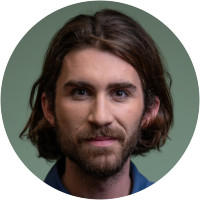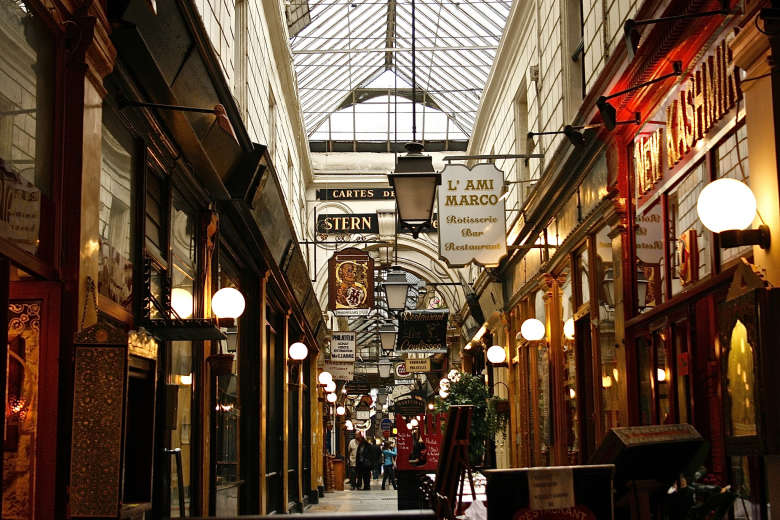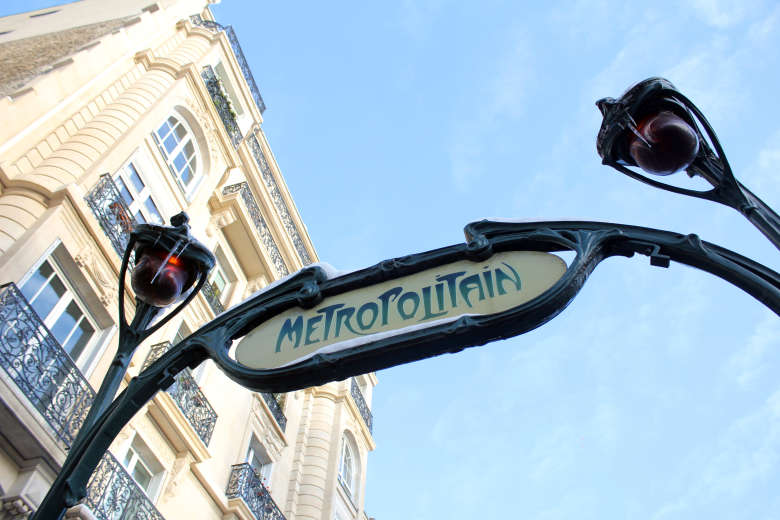Tour Details
Duration
3 hours
Product Type
Tour
Venues
- Palais Royal
- Opera Garnier
- Grands Boulevards
- Galerie Vivienne
Select a date
Tour Description
On this three-hour Paris architecture tour, we'll explore how the face of "The City of Lights" was completely changed by 19th-century city prefect Baron Haussmann and explain why the city looks the way it does. Guided by an expert in architecture, we’ll discuss the urban planning revolution Haussmann engineered by restructuring entire neighborhoods and creating many wide avenues in place of narrow, twisting streets.
We’ll begin our discussion at the Palais-Royal, which was constructed in 1781 by Louis-Phillipe d'Orléans, Duc de Chartres, as the city's first purpose-built shopping and leisure complex. Today, a charming oasis of calm, Palais-Royal caused quite the kerfuffle when it opened, revolutionizing shopping in a city whose narrow, congested, medieval streets were a danger to any pedestrian foolish enough to set foot in them. Palais-Royal was also the site of the city's first covered passage, or shopping arcade, which we’ll discuss as we wander through some of those still in existence.
From here, we'll enter modern Paris, stepping out onto one of the wide, straight-as-an-arrow Grands Boulevards created during the Second Empire by Napoleon III and Haussmann. We'll discuss how Haussmann's boulevards were modeled on those created by Louis XIV in the 17th century and how the rise of the bourgeoisie in the 19th century led to Napoleon III's radical rebuilding of Paris. Moving on, we'll find ourselves in front of what is perhaps the most iconic example of Second Empire urbanism, the Opéra Garnier. Completed in 1875, the Opéra is the jewel in the crown of Parisian Beaux Arts architecture. We will explore the exterior of the building in detail, placing it in the context of the architectural movements of the day. Depending on time and interest, we may also visit one of the late 19th-century department stores, Printemps or Galeries Lafayette, or even the Société Generale bank building to explore art-nouveau glass domes.
We’ll begin our discussion at the Palais-Royal, which was constructed in 1781 by Louis-Phillipe d'Orléans, Duc de Chartres, as the city's first purpose-built shopping and leisure complex. Today, a charming oasis of calm, Palais-Royal caused quite the kerfuffle when it opened, revolutionizing shopping in a city whose narrow, congested, medieval streets were a danger to any pedestrian foolish enough to set foot in them. Palais-Royal was also the site of the city's first covered passage, or shopping arcade, which we’ll discuss as we wander through some of those still in existence.
From here, we'll enter modern Paris, stepping out onto one of the wide, straight-as-an-arrow Grands Boulevards created during the Second Empire by Napoleon III and Haussmann. We'll discuss how Haussmann's boulevards were modeled on those created by Louis XIV in the 17th century and how the rise of the bourgeoisie in the 19th century led to Napoleon III's radical rebuilding of Paris. Moving on, we'll find ourselves in front of what is perhaps the most iconic example of Second Empire urbanism, the Opéra Garnier. Completed in 1875, the Opéra is the jewel in the crown of Parisian Beaux Arts architecture. We will explore the exterior of the building in detail, placing it in the context of the architectural movements of the day. Depending on time and interest, we may also visit one of the late 19th-century department stores, Printemps or Galeries Lafayette, or even the Société Generale bank building to explore art-nouveau glass domes.
For those interested in modern Parisian architecture, we suggest our Modernist Paris Architecture Tour.
FAQ
Is this tour walking-intensive and/or wheelchair accessible?
We do cover extensive territory on this tour. Please contact us with any questions or concerns.
Will we visit the interior of the Opera Garnier on this walk?
We will not visit the interior of the Opera, though we will certainly spend concerted time outside discussing the importance of the site.
Where do we meet? Where does it end?
The walk begins near the Palais Royal in the first arrondissement. Your confirmation email will have the exact meeting point details along with a map. The walk typically ends near the Opéra Garnier, Grands Boulevards, or Saint Lazare.
What if it’s raining?
Tours operate rain or shine, but in the case of inclement weather, your guide will modify the tour so that more time is spent indoors. It never hurts to have an umbrella on hand.
We do cover extensive territory on this tour. Please contact us with any questions or concerns.
Will we visit the interior of the Opera Garnier on this walk?
We will not visit the interior of the Opera, though we will certainly spend concerted time outside discussing the importance of the site.
Where do we meet? Where does it end?
The walk begins near the Palais Royal in the first arrondissement. Your confirmation email will have the exact meeting point details along with a map. The walk typically ends near the Opéra Garnier, Grands Boulevards, or Saint Lazare.
What if it’s raining?
Tours operate rain or shine, but in the case of inclement weather, your guide will modify the tour so that more time is spent indoors. It never hurts to have an umbrella on hand.
Experts
Where You'll Start
–
325 Reviews
Reviews can only be left by Context customers after they have completed a tour. For more information about our reviews, please see our FAQ.
I'm still talking about it. It was very good.
There is one thing that could be improved, but I don't think it's in response to something wrong, but just something that I noticed on the two tours of yours I've done.
Both on this walk and the Florence Oltrarno walk, there was no consideration to the dynamic between the other clients and the fact that we'd be spending the next 3 hours together. It might be that some docents are simply more the kind of characters to socialize the experience than others, and i can also imagine that it would be hard to instruct a docent who doesn't have that same social art as another exactly what they should do.
But that said, I found myself asking questions to the other people about where they're from and what other tours they've done and all that. And asking the guide too about their background, etc. Since you're with other people who are strangers, the experience is certainly improved if you all find some common ground and get along and enjoy each other's company. This should be a goal of the docent as well to kind of orchestrate the dynamic like a dinner party almost, to make get others chatting and feeling comfortable with one another.
Steven
Reviewed on:
Oct 29, 2011
Learned a lot about Paris history and culture. Liked going thru Palais Royal and ending up at the top of Galleries Lafayette.
Joan
Reviewed on:
Oct 17, 2011
The walk was well-paced, variable, and highlighted points of interest. We were given the opportunity to ask questions and contour the morning to the individual and collective interests of the participants.
Gabriel was terrific: personable and extremely well-informed about the specific topic but also able to speak to tangential subjects - with the result that the experience was not only educational, but interesting and fun.
By the end of the walk, Paris was "ours", too - an incomparable gift!
Andrea
Reviewed on:
Oct 9, 2011

